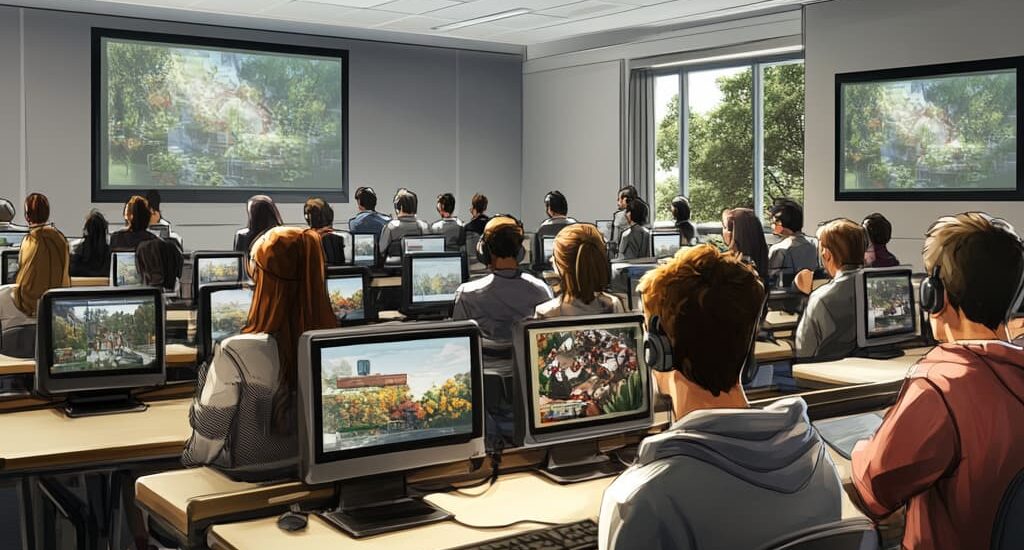


Video Games

Over the past decade, esports has transformed from a niche subculture into a global industry worth billions. Competitive gaming now attracts massive audiences, earns professional players celebrity status, and drives innovation in technology and entertainment. Yet one of the most intriguing developments in recent years has been the growing incorporation of esports into schools and educational programs. What was once viewed as a distraction is now being embraced by educators, administrators, and policymakers as a legitimate tool for engagement, learning, and even career development.
Changing Perceptions: From Distraction to Discipline
For many years, video games were seen as a hindrance to academic success—something that distracted students from homework, reduced social interaction, and contributed to unhealthy habits. But as understanding of gaming and its potential benefits deepens, perceptions have shifted. Esports, in particular, demands high levels of strategic thinking, teamwork, communication, and discipline—qualities that educators increasingly recognize as transferable to both academic and professional contexts.
Today, many schools are beginning to view esports not as a threat to education, but as an extension of it. Competitive gaming can help develop valuable life skills while keeping students engaged and motivated.
Esports Programs on Campus
High schools and colleges across North America, Europe, and Asia are integrating esports into their curriculums and extracurricular activities. In the United States, the High School Esports League (HSEL) now includes over 3,400 schools. Colleges such as the University of California, Irvine, and Harrisburg University have launched varsity esports teams with scholarships and dedicated training facilities.
These programs typically offer students opportunities to compete in tournaments, receive coaching, and even pursue careers in the gaming and tech industries. They are often structured like traditional sports teams, complete with practices, strategy meetings, and physical wellness initiatives.
Academic Integration and Curriculum Development
Esports integration is not limited to clubs or after-school activities. Some schools are embedding gaming into the academic curriculum itself. Courses in game design, computer science, marketing, broadcasting, and event management are all natural extensions of esports programming.
Educators have also started to use esports as a gateway to teach STEM (Science, Technology, Engineering, and Mathematics) subjects. For example, students might learn statistics by analyzing game data, or explore physics by studying projectile motion in first-person shooters.
Additionally, courses in communication and leadership can be grounded in real-time strategic collaboration within team-based games. As esports evolves, the educational opportunities grow far beyond gameplay.
Benefits of Esports in Education
1. Increased Student Engagement
Many students who struggle with traditional classroom settings find a sense of purpose and community in esports. It provides a platform for those who may not participate in conventional sports or clubs to develop confidence and social connections.
2. Teamwork and Communication
Esports demand cooperation and communication. Success depends on players working together, sharing responsibilities, and developing collective strategies—all skills highly valued in academic and workplace settings.
3. Career Pathways
The gaming industry offers a wide range of career opportunities, from software development and graphic design to marketing, management, and broadcasting. Introducing esports in schools can help students discover and pursue careers they may never have considered.
4. Inclusivity and Accessibility
Unlike many traditional sports, esports is inclusive of different physical abilities and backgrounds. It lowers the barrier to entry for students who may face challenges in other extracurricular activities.
5. Mental Agility and Strategic Thinking
Competitive gaming requires fast decision-making, adaptability, and mental endurance. These cognitive demands foster critical thinking and can enhance performance in academic tasks.
Addressing Concerns and Challenges
Of course, integrating esports into education is not without its critics. Concerns around screen time, addiction, and violence in games persist. However, with the right structure and oversight, these risks can be mitigated.
Educational institutions that adopt esports programs typically implement strict codes of conduct, screen time limits, and health guidelines. They also encourage balance—pairing gaming with physical exercise, healthy habits, and academic accountability.
Another challenge is resources. Not every school can afford to build a dedicated esports lab or hire specialized staff. However, partnerships with local businesses, universities, and sponsors can help bridge these gaps.
Real-World Examples
Several pioneering schools provide compelling case studies:
The Future of Esports in Education
As the esports industry continues to grow, so too will its role in the educational system. In the near future, we may see:
Moreover, esports can be a powerful tool for bridging the digital divide. With proper investment, underserved communities can gain access to modern technology, new forms of learning, and career paths in a growing sector.
Conclusion
Esports in education is more than a trend—it represents a fundamental shift in how we engage students and prepare them for the future. Through structured programs, supportive environments, and curriculum integration, video games are moving from the living room to the classroom, reshaping what learning can look like in the 21st century.
As schools embrace this evolution, they unlock new possibilities for inclusion, innovation, and inspiration—one game at a time.